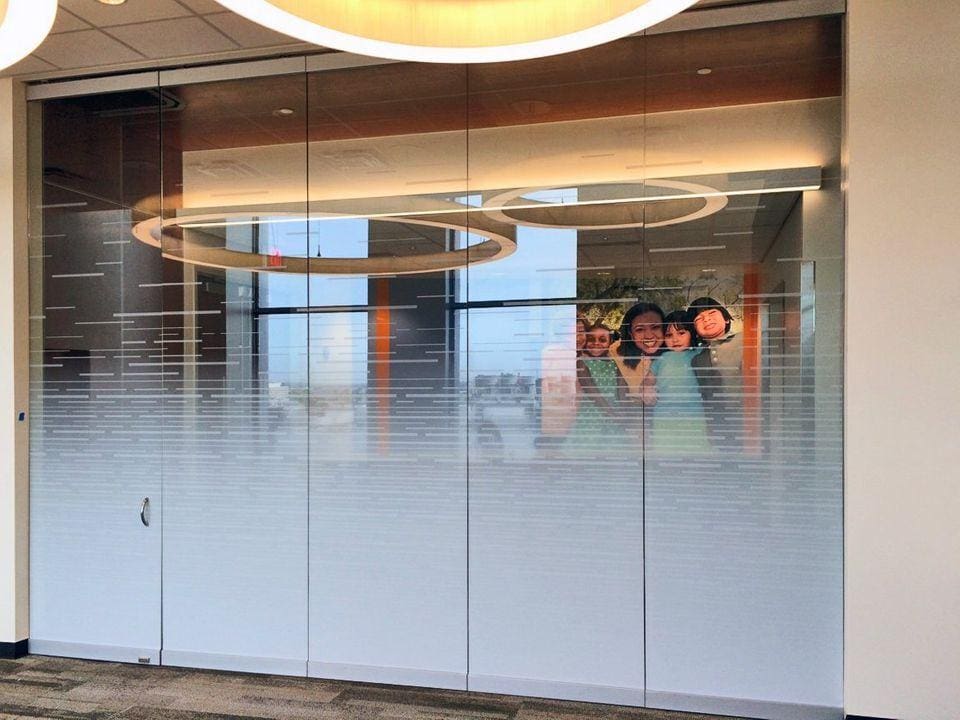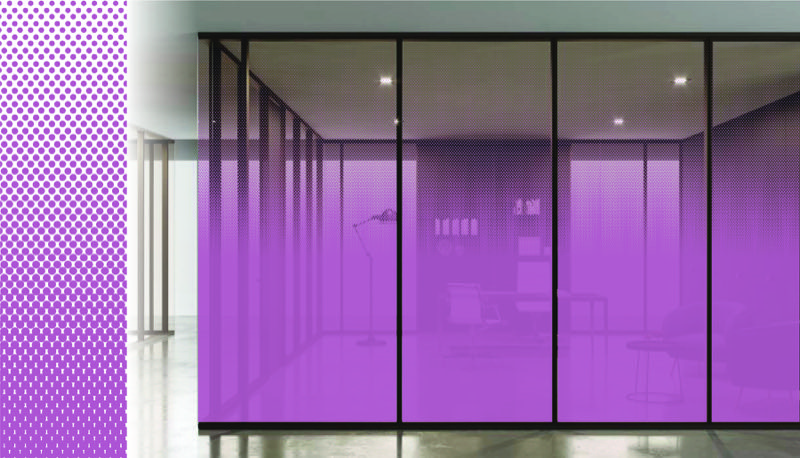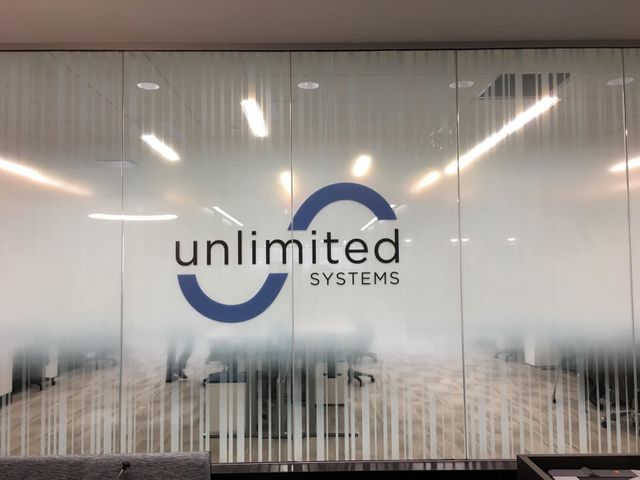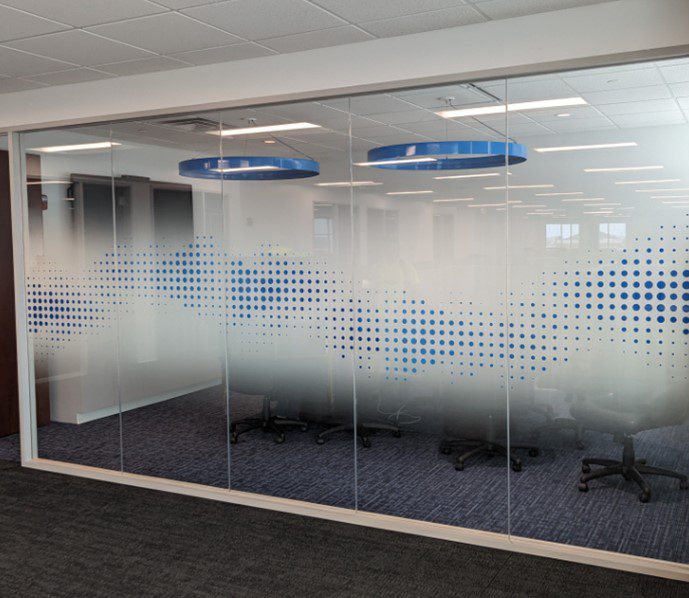
Glass surfaces dominate modern commercial architecture, yet most businesses fail to leverage these transparent canvases for branding and functionality. Commercial window film design offers a sophisticated solution that transforms ordinary windows into strategic design elements while addressing privacy, light control, and aesthetic needs.
Gradient window films represent the pinnacle of this design approach, creating visual interest through smooth transitions that captivate visitors and enhance workspaces. These versatile films merge form and function in ways that static window treatments simply cannot match.
Contents
Transform Commercial Spaces with Gradient Window Films
Gradient window films transform ordinary glass into stunning visual elements through smooth transitions from opaque to transparent or between colors. These versatile commercial window film designs offer businesses an elegant way to enhance their spaces while addressing practical needs. The graduated patterns create depth and visual interest that static films simply cannot match.
These films adhere directly to glass surfaces in offices, retail stores, and hospitality venues. The subtle transitions can reflect your brand identity through carefully selected colors while solving design challenges in modern commercial environments.
Top Ways to Incorporate Gradient Designs
1. Emphasize Branding in Storefronts
Gradient window films allow retail spaces to showcase brand colors while maintaining visibility of merchandise. The graduated opacity creates an inviting transition that draws customers in while highlighting products.
- Brand Recognition: Incorporate logo colors at the top of windows while fading to clear at eye level
- Visual Flow: Guide customer attention with color transitions that lead toward key display areas
- Seasonal Flexibility: Change gradient films more easily than traditional signage for promotional periods
2. Define Privacy in Open Offices
Open-concept workplaces benefit tremendously from strategic gradient film placement. The graduated opacity provides visual separation without blocking light or creating isolation.
Conference rooms can feature gradient films that offer privacy at seated eye level while maintaining transparency above. This commercial window film design preserves the open feeling while creating functional meeting areas.
Enhanced Benefits for Commercial Interiors
Light Control Without Sacrificing Visibility
Gradient window films excel at managing natural light in commercial environments. The variable opacity reduces harsh glare on computer screens while still welcoming daylight into the space.
By leaving the top portions of windows clear while adding opacity to lower sections, natural illumination reaches further into the building. This thoughtful commercial window film design creates comfortable workspaces without constant blind adjustments.
Custom Color Transitions for Impact
Our gradient films can be customized to match specific brand palettes or complement existing interior design schemes. The color transitions create visual movement that adds dimension to glass partitions or exterior windows.
- Zone Definition: Use different color gradients to visually separate functional areas
- Wayfinding: Subtly guide visitors through spaces with color transitions that indicate pathways
- Mood Enhancement: Select colors that promote the desired emotional response in different areas

Key Factors to Consider
Balancing Aesthetics and Function
When selecting gradient window films, consider both visual impact and practical requirements. The film’s opacity level, color intensity, and transition pattern all affect appearance and functionality.
Window orientation plays a crucial role in determining the optimal gradient pattern. South-facing windows might benefit from darker gradients to control heat and glare, while north-facing windows might use lighter transitions to maximize natural light.
Evaluating Durability and Maintenance
Commercial spaces require durable materials that withstand daily use. High-quality gradient films resist scratching, peeling, and fading even in high-traffic areas.
While we at Artople focus on manufacturing premium gradient films, we can recommend qualified installation partners who specialize in commercial applications. Our commercial window film designs are engineered for longevity in demanding environments.
Planning the Design Process
1. Collect Inspiration and Mood Boards
Gather examples of gradient applications that align with your design vision. Include brand guidelines, interior color schemes, and architectural elements that will interact with the films.
Create digital mockups showing how different gradient patterns might look in your specific space. This visualization helps stakeholders understand the potential impact before installation.
2. Coordinate with Professionals
Consult with architects or interior designers early in the process to integrate gradient films into the overall design concept. Their expertise ensures the films complement other elements in the space.
Share material samples with your design team to evaluate how the gradients interact with lighting conditions throughout the day. This step prevents surprises after installation.
3. Finalize Sizing and Opacity
Precise measurements are essential for custom gradient films. Consider both the physical dimensions and the transition points where opacity changes.
Test different opacity levels to find the perfect balance between privacy and openness. What works in one space may not be ideal for another, even within the same building.
Bringing It All Together
Gradient window films offer commercial spaces a unique combination of artistic expression and practical functionality. They transform ordinary glass into design features that support both brand identity and occupant comfort.
Our collection at Artople includes ready-to-install gradient designs as well as fully customizable options for unique commercial applications. We focus on creating premium commercial window film designs that deliver both visual impact and lasting performance.
For inspiration or to discuss your specific project needs, explore our complete selection of decorative films or contact our design team for personalized recommendations.



